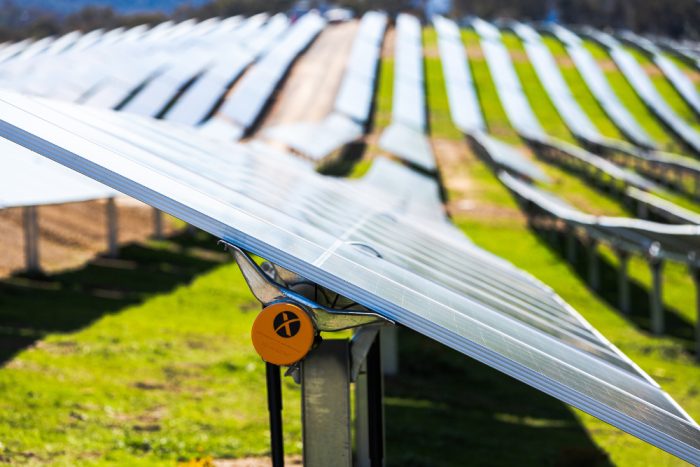Nextracker adds eBOS line with Bentek Corp. acquisition

Nextracker added electrical balance of systems (eBOS) products and services to its toolbelt last week, acquiring the Bentek Corporation. The all-cash transaction of approximately $78 million combines Bentek’s engineered, pre-assembled eBOS solutions with Nextracker’s solar tracker platform. Bentek’s U.S. fabrication footprint also adds to Nextracker’s domestic supply chain position.
“We have been encouraging them to make this move to bring their operational excellence and financial strength to electrical products supporting solar power plants,” said George Hershman, CEO of SOLV Energy, a long-time customer of both Nextracker and Bentek. “Bentek was a great choice for Nextracker.”
Nextracker + Bentek eBOS
The Bentek eBOS technology components comprise the electrical infrastructure used in all utility-scale solar projects to collect and transport electricity from solar panels to power conditioning systems throughout the entire solar field.
As part of Nextracker, the eBOS products will be offered as standalone, industry-compatible components for both trackers and fixed tilt systems, as well as in formats optimized for use in integrated NX Horizon system solutions.
“It is fantastic to join forces with Bentek, expanding the Nextracker platform with exceptional eBOS products and expertise,” said Howard Wenger, President of Nextracker. “Together, we can offer fully engineered, integrated solutions that can help accelerate procurement and construction timelines and reduce installed cost, all backed by the trusted Nextracker brand. We believe that an integrated design approach can unlock synergies between the mechanical and electrical subsystems, driving enhanced customer value and creating a new and powerful solar power plant platform business model.”
eBOS products
Trunk bus solutions – electrical DC collection strategy that combines PV harnessing and insulation piercing connector (IPC) technology to connect panels to inverters. This solution effectively consolidates wiring within the tracker rows and routes power directly to inverters, lowering field labor costs, improving reliability, and reducing maintenance over the life of the system.
Combiner box solutions – electrical DC collection strategy that combines PV harnessing using a pre-designed and manufactured combiner box to connect panels to inverters. Generally mounted on the tracker rows to combine solar panel strings in the field and deliver power to inverters, this approach enables a plug-and-play solution with enhanced flexibility and serviceability benefits.
Configurable harness solutions – tailored for each project, both string and over-mold harnesses connect multiple PV strings in parallel for reliable, plug-and-play DC aggregation. These solutions feature factory-manufactured over-molded fuses and joints, enabling configurations for a broad range of cable sizes and connector types.
Nextracker foundations acqusition
Last year, Nextracker acquired Ojjo, a company specializing in foundation technology and services in June 2024. On The Pitch, Sol Hutson and Charles Almy from Nextracker dig deeper on the importance of solar tracker foundations with Solar Builder Editor Chris Crowell.
- 0:27 – Why all the recent focus on solar tracker foundations?
- 1:37 – Overview of Ojjo foundation design and installation innovations
- 2:52 – Where does this open up the market for more solar?
- 6:10 – Foundation design impact on terrain-following trackers
- 8:04 – How much can we reduce grading?
- 9:08 – What are other environmental considerations?
- 10:54 – How else are tracker design / install processes changing?
- 14:11 – The changing dynamic of suppliers, EPCs, and solar developers





Comments are closed here.